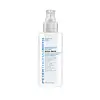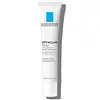What's inside
What's inside
 Key Ingredients
Key Ingredients

 Benefits
Benefits

 Concerns
Concerns

 Ingredients Side-by-side
Ingredients Side-by-side

Salicylic Acid 2%
MaskingWater
Skin ConditioningAlcohol Denat.
AntimicrobialGlycolic Acid
BufferingSodium Hydroxide
BufferingGlycerin
HumectantArginine
MaskingHydroxyethylcellulose
Emulsion StabilisingButylene Glycol
HumectantIsododecane
EmollientHydroxyacetophenone
AntioxidantPhenoxyethanol
PreservativeAloe Barbadensis Leaf Juice
Skin ConditioningPotassium Sorbate
PreservativeSodium Benzoate
MaskingDisodium Phosphate
BufferingPolysorbate 60
EmulsifyingArnica Montana Flower Extract
MaskingGlycyrrhiza Glabra Root Extract
BleachingSodium Phosphate
BufferingCitric Acid
BufferingSalicylic Acid 2%, Water, Alcohol Denat., Glycolic Acid, Sodium Hydroxide, Glycerin, Arginine, Hydroxyethylcellulose, Butylene Glycol, Isododecane, Hydroxyacetophenone, Phenoxyethanol, Aloe Barbadensis Leaf Juice, Potassium Sorbate, Sodium Benzoate, Disodium Phosphate, Polysorbate 60, Arnica Montana Flower Extract, Glycyrrhiza Glabra Root Extract, Sodium Phosphate, Citric Acid
Benzoyl Peroxide 5.5%
Water
Skin ConditioningIsostearyl Alcohol
EmollientGlycerin
HumectantPentylene Glycol
Skin ConditioningSilica
AbrasiveCarbomer
Emulsion StabilisingCapryloyl Salicylic Acid
ExfoliatingPotassium Hydroxide
BufferingTocopheryl Acetate
AntioxidantAcrylates/C10-30 Alkyl Acrylate Crosspolymer
Emulsion StabilisingDisodium EDTA
Epilobium Angustifolium Flower/Leaf/Stem Extract
Skin Conditioning
 Reviews
Reviews

Ingredients Explained
These ingredients are found in both products.
Ingredients higher up in an ingredient list are typically present in a larger amount.
Glycerin is already naturally found in your skin. It helps moisturize and protect your skin.
A study from 2016 found glycerin to be more effective as a humectant than AHAs and hyaluronic acid.
As a humectant, it helps the skin stay hydrated by pulling moisture to your skin. The low molecular weight of glycerin allows it to pull moisture into the deeper layers of your skin.
Hydrated skin improves your skin barrier; Your skin barrier helps protect against irritants and bacteria.
Glycerin has also been found to have antimicrobial and antiviral properties. Due to these properties, glycerin is often used in wound and burn treatments.
In cosmetics, glycerin is usually derived from plants such as soybean or palm. However, it can also be sourced from animals, such as tallow or animal fat.
This ingredient is organic, colorless, odorless, and non-toxic.
Glycerin is the name for this ingredient in American English. British English uses Glycerol/Glycerine.
Learn more about GlycerinWater. It's the most common cosmetic ingredient of all. You'll usually see it at the top of ingredient lists, meaning that it makes up the largest part of the product.
So why is it so popular? Water most often acts as a solvent - this means that it helps dissolve other ingredients into the formulation.
You'll also recognize water as that liquid we all need to stay alive. If you see this, drink a glass of water. Stay hydrated!
Learn more about Water